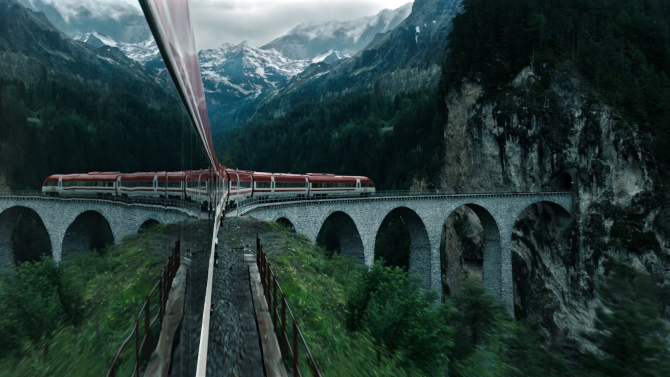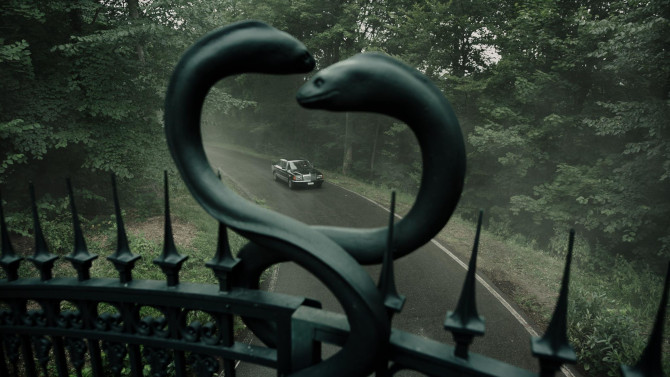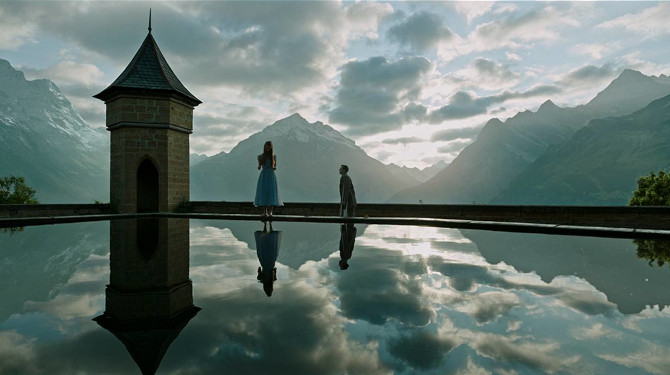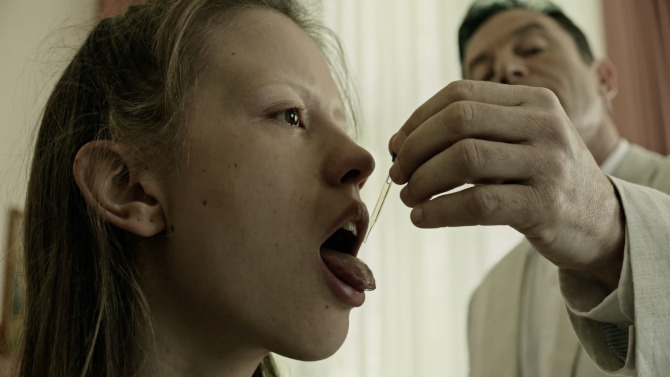Transporting the viewer down the proverbial rabbit hole, 2016’s A Cure for Wellness, co-written and directed by Gore Verbinski, is a fantastical fairy tale, but maybe not in the way you might be thinking.
Rooted in the original Grimm versions of the stories that might come to mind, this narrative is horror tinged, to be sure. Full of juxtaposition and symmetry, we follow a newly promoted cutthroat executive, boy-faced Lockhart (Dane DeHaan), who is being tasked with retrieving their CEO emeritus of sorts, Pembroke (Harry Groener) – a beast of a businessman, who, after taking two weeks off in the Swiss Alps, has decided to call it quits and focus more on his health and wellness (a complete role reversal by the businessman).
With a big merger being planned, and some discrepancies in the numbers, the board is desperate for his return. . . and low man Lockhart is the unlucky fellow who must make the lengthy trip.
Journeying into a world that should seemingly be engaged with lost princesses, battles between villagers and the kingly castle dwelling elites, and the like, this might be one of the most beautiful horror movies you’ll see (it is mostly shot in Germany, by the way). Up and in Lockhart journeys, past forest and disgruntled villagers, eventually finding an ancient centre for wellness sitting atop the world.
Guarded by a hefty wrought iron gate with an odd eel sigil adorning it, the facility, jam packed with wealthy elite from around the world (who seem more than happy to give their money away for this supposed cure), is run by the renowned Dr. Volmer (Jason Isaacs).
At first glance immeasurably beautiful, its fantastical landscape is almost too good to be true. And it does not take long for the unusual anomalies to catch Lockhart’s eye – from cell phones not working and restrictive visiting hours, to ancient barred basement windows and locked private corridors. . . and don’t get me started on the noisy plumbing, something just feels a bit off. Each new scene adds a new mystery – what are those druggist blue bottles some patients and doctors carry around, or further expounds upon one of the clues or anomalies already teased at.
Soon, the young man finds himself a guest of the retreat, waiting for his meeting with Pembroke while recovering from a less than little accident. Treated to some of the regions famed healing water (though it might not be the best for dental health), as well as a couple of rather archaic (or are they modernistic) treatments, it should all make us feel just a tad uneasy.
Creating a tense aura by way of locale and corresponding visuals, this is not your typical modern fare. Very punctilious in its pace, it will likely be too measured for some viewers. Verbinski clearly relishes in the mood that he sets, which is rather complex in its emotions. Despite being told they have the cure, the German word Weltschmerz comes to mind – a term that means feeling melancholy and a certain world-weariness. Despite this escape to the mountainous countryside, there is still a malaise to the place – blank visages are often seen, and anyone who gets a bit too creative, like amateur historian and conspiracy fanatic Victoria Watkins (Celia Imrie), are provided with more treatments than you’d expect. While youngest patient Hannah (Mia Goth) is perhaps the most curious of all – but maybe I’ll just leave it at that. Intriguingly, the above German word could also speak to those board members back in the United States (but in a completely different way).
As for those patients in Switzerland, it also feels like another German word would work well here – palimpsest, which means a very old text which has been removed and replaced by new writing. . . as these individuals don’t feel wholly themselves. In fact, the whole piece relates to this word, as there are echoes to a distant past, with this location’s healing powers having led to some very real violence some two centuries earlier.
With some of the most arresting visuals you’ll see, Verbinski spends the third act creating an unexpectedly waltz-like visual harmony. . . with multiple storylines being edited together in optically symmetrical ways, a synchronicity that even Sting and The Police would be proud of. Of course, the climax might be a bit predictable, and some of the narrative teases are left for the audience to expand in their own minds, both of which might disappoint some ardent cinephiles, but the visuals can never be denied. . . nor can its mesmeric score (be it the eerily sung lullaby or its orchestral ensembles fused with electronics) by Benjamin Wallfisch.
Living in the gothic realm, A Cure for Wellness feels very old fashioned compared to so many of its contemporary horror counterparts. Like a snake, or perhaps eel, eating its own tale, its two hour and twenty-six minute runtime might feel endless for some, but if you’re willing to give yourself over to a primordial visual experience, it might just have you praising its rebirth of a methodical cinematic time that had evidently past (think Rosemary’s Baby, Wicker Man and The Shining). So, find out if this movie might be your cure, one thing’s for sure, it’s cinematically pure.






